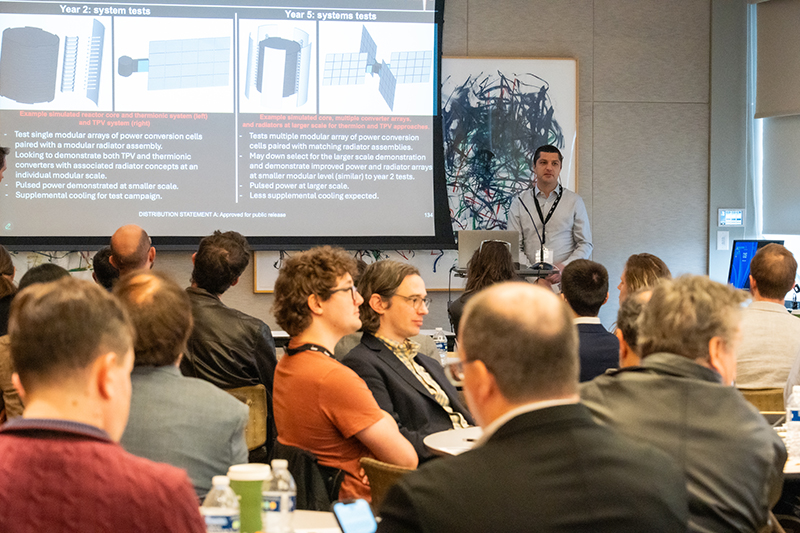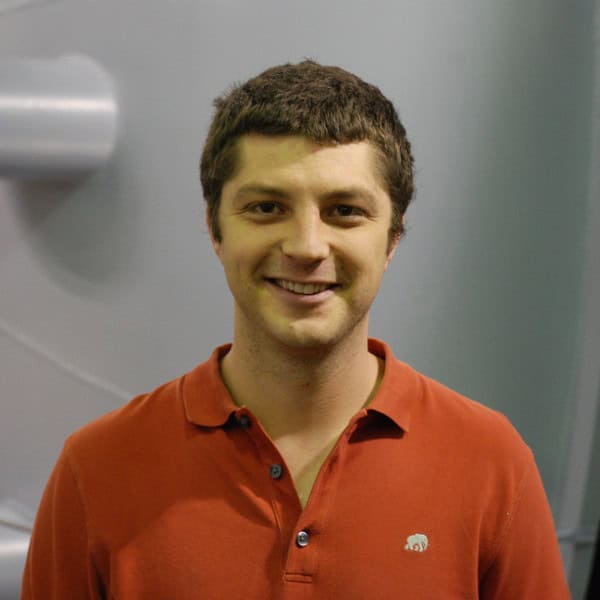
The People Behind SPAR: Eric Viges
SPAR Chief Engineer Eric Viges leading the institute’s power division to advance space power and propulsion technologies

SPAR Chief Engineer Eric Viges leading the institute’s power division to advance space power and propulsion technologies

The $35 million Space Power and Propulsion for Agility, Responsiveness and Resilience (SPAR) Institute, an award under the USSF University Consortium, has an ambitious set of goals to tackle in the coming year. To facilitate the push toward these goals, SPAR has appointed two dedicated chief engineers – one for the power division and one for the propulsion division. One of these chief engineers is Eric Viges, a Lead Engineer for U-M’s Space Physics Research Laboratory and the Plasmadynamics and Electric Propulsion Laboratory (PEPL).
As one of the key players in the new institute, Viges is taking on the technical leadership role as head of the institute’s power division. With this, he will be coordinating different elements of the power side to bring together sub team members and do systems demonstrations in Year 2 and Year 5 of the project.
Over the next two years, the goal of SPAR will be to produce novel prototype systems for demonstrating key capabilities using systems-level tests. These tests will be performed in a vacuum environment in PEPL.
“There are a lot of challenges with an institute like this, because there are so many teams and elements to bring together and ultimately showcase in a simulated nuclear power systems demonstration,” Viges stated.
Viges will be facilitating how the power side of the system is developed, how the decisions are made and will build parts of the simulated system. A large part of this technical leadership role will be designing interfaces and ensuring there is excellent communication between sub teams.
In addition to his leadership role with the power division of SPAR, Viges has taken on the task of building the new lab facility. Having led the majority of the new development, he has coordinated with other University of Michigan teams to upgrade the facility while also designing new equipment and ensuring its seamless installation.
“It’s all really exciting. There haven’t been many attempts to develop nuclear space reactors since the ‘60s. We’re pushing to build innovative, tangible hardware that could lead to a next generation space reactors. We’re doing it by bringing together diverse experts that don’t often interact to deliver something new and useful. We have people from industry, government, and academia – even students to provide a fresh perspective and gain experience.”
Professional Background:
Viges started his professional career while still a senior at the University of Michigan Department of Chemical Engineering, working with Professor Michael Solomon who, at the time, was partnering with Electrodynamic Applications (EDA) on a Small Business Innovation Research (SBIR) Project on a technique to dry out nanoparticle suspensions for the Army.
EDA was owned by U-M Professors Brian Gilchrist and Alec Gallimore. Gallimore also founded PEPL and served as the U-M College of Engineering Dean from 2016 to 2023. After working on the SBIR Project, Viges was later hired into the company in 2010. At EDA, he supported a variety of research developments in gridded ion thrusters, hollow cathodes, hall thrusters, xenon gas recovery systems, plasma diagnostics for hypersonics and atmospheric reentry as well test campaigns at PEPL for commercial aerospace companies.
Eight years later, in 2018, Viges officially joined PEPL as a lab manager to help support students within the lab. He now has a dual appointment between Aerospace Engineering and the Space Physics Research Lab (SPRL). Within PEPL, Viges has done a large amount of upgrading to the vacuum facility and has had a hand in supporting all of the projects that are run within the lab space. Since every PhD student within the lab pursues their own research projects, as well as outside commercial test campaigns, Viges continuously has his hands busy one way or another.
“I love my role because I have the opportunity to work on a wide variety of things. I have a lot of experience designing, testing, and manufacturing aerospace hardware. I also have deep expertise with vacuum systems and take pride in training the next generation of engineers on mastering specialized technology like helium leak testers and cryogenic vacuum pumps.”
Viges supports the lab by teaching students how to run the various vacuum chambers and optimize their test campaigns. Students join the PEPL lab with impressive academic credentials, but much to learn regarding the specialized lab technology. By the time they graduate, they leave proficient thanks to Viges’ leadership within the lab space.
“I’ve seen four generations of graduate students, many of them now have their own labs or have accomplished impressive things in industry or the government,” Viges commented. “It’s hard though. By the end of their time at PEPL they’re very proficient, but it’s time for them to graduate and leave. We’re fighting this constant brain drain with all these great people that come through but quickly move on. The SPAR Project is in fact bigger than anything we have done in the past and that has allowed us to retain some people, which is wonderful.”
Not only has Viges assisted in students’ projects, he has also helped facilitate other lab projects and initiatives including vacuum chamber revitalization, upgrades to a large number of cryogenic pumps and the designing of new equipment.